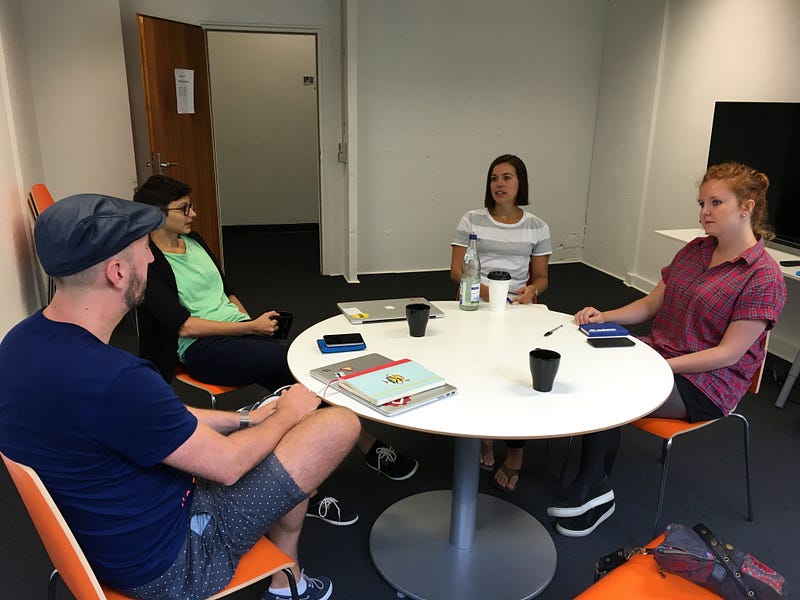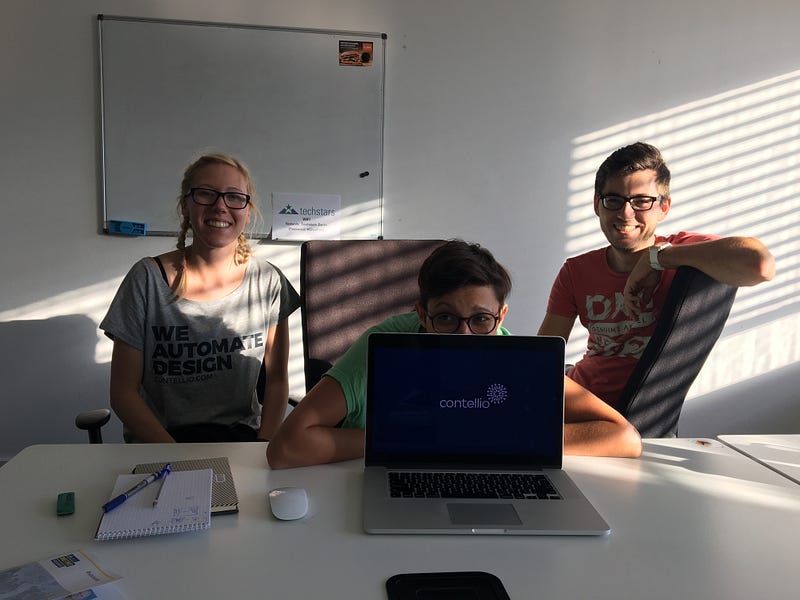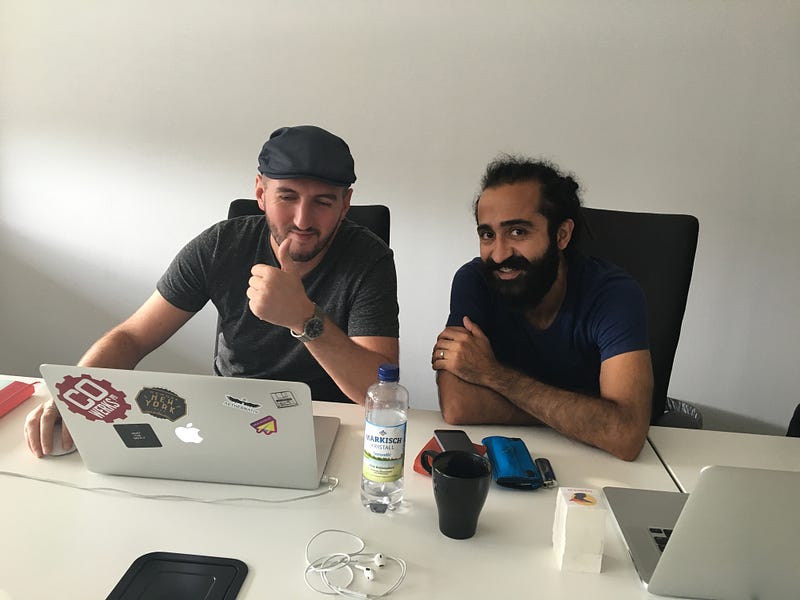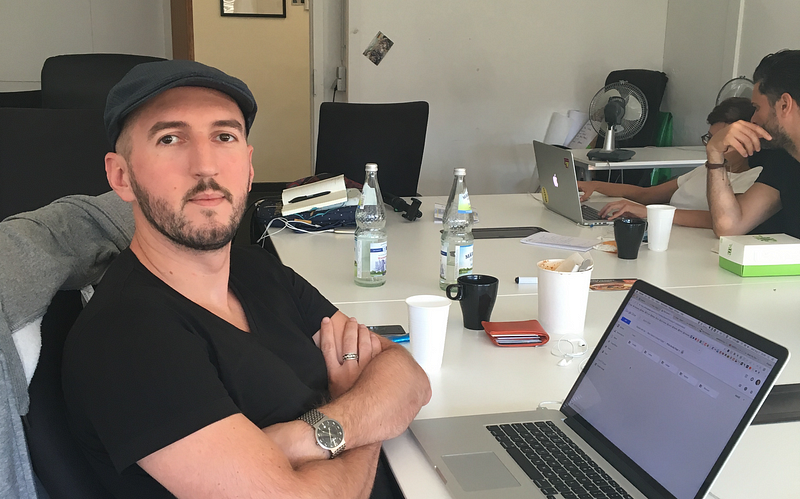Advice from Techstars
The Techstars accelerator program has come to be known as one of the best options for early stage companies, especially those within the #1 fastest growing startup ecosystem, globally — Berlin.

We were honored when Techstars asked us to work with the founders of Berlin’s summer program. Of all the startups that submit applications to Techstars, only the cream of the crop are hand-picked. We jumped at the chance to work with these bright minds, who will no doubt go on to do great things, especially with the guidance and mentorship provided by Techstars.
Our task was to spend one week creating demo day presentations for the 10 graduating companies. The engagement was intense. In the end, the presentations came out beautifully, and impressed each of their respective audiences. Afterward, while we were all lovey dovey, we asked each founder to spend 15 minutes to share with us (and now you) their thoughts on solving important problems, gaining market validation, and working through the “dip.”
Choosing a problem YOU can solve
The overwhelming majority of entrepreneurs we work with at New Haircut are solving a problem they have first-hand experience with. The founders within Techstars were no different. Experiencing a challenge directly often equips founding teams with the empathy required to build viable solutions, but that’s not always the case…
Sometimes, the idea you’ve been living and breathing, isn’t necessarily the right problem to solve. For example, the idea Jonas Miebach entered the program with that he’d been working on for 2.5 years, was quickly invalidated by several Techstars mentors. So Jonas huddled with his team to choose a new problem to solve — bringing efficiency and pricing transparency to funeral services. And while none of them had direct experience, by speaking directly with funeral parlors and older people that had dealt with managing a loved one’s death, they discovered a need for Funeria.
Christopher Kränzler of Lengoo was a translation manager working for Accenture. He was constantly struggling to find available, localized subject matter experts for projects he was working on inside Accenture. So he decided to build a marketplace to help people like himself find such translators, on-demand.
Christopher experienced the problem directly and had all of the validation he needed to begin creating solutions. While Jonas picked a new challenge he had little experience with but spent the first week talking to those affected, to validate and gain the required empathy. The important takeaway is that you need ample knowledge (first-hand or otherwise) of the problem in order to create a viable, compelling solution for it.
Validating your solution
But just because you found a problem to be solved, doesn’t mean your solution will work. In fact, you could say that the easy part is discovering a challenge. The grind comes from building intuitive solutions your customers will consider, trust, and adopt. And the only way you’ll know if your solution is hitting the mark, is to put it in front of your customers as early and often as possible.
Goedle, for example, has been working on building AI-infused automation within marketing campaigns. They’re fortunate enough to have dozens of customers to speak with, but they remain focused on engaging the CMOs inside these companies, who are often their primary customer. This means Goedle has not only been able to continue learning and iterating the product, but CMOs become big-time advocates of their platform inside the companies they work for.
When we asked Fabian Hadji of Goedle about the most important piece of advice he’d offer to startups, he said “It may be cliché but get out of the office and talk to as many examples of your customer as you can.”

Paul Nowak of Contellio spent his first 2 months talking with his customers. He called them, met them for coffee, and tracked them down at meetups. Though he and his partner had first-hand experience with the challenge of working with slow, inefficient designers, he knew he needed more context from others. By learning from nearly 100 others that faced similar problems, Contellio was able to rapidly evolve their solution out of the gate to form an automated design service that’s showing early signs of market adoption.
Overcoming challenges
90% of startups fail. It’s those that never quit, that work through seemingly impossible pitfalls, that fly in the face of everyone that says they should give up, that become the 10% that succeed. The founders within Techstars Berlin also know their share of challenges.
Gerçek Karakuş of Raklet struggled to find a revenue model that would work for both the non-profit and for-profit customers they served. And once activated, keeping those accounts retained so that they keep coming back to support recurring revenues was even trickier. So while they created a validated solutions to a real problem, monetizing that solution is the next piece to overcome. But by constantly speaking with his customers and testing pricing models, he’s getting the indicators he needs to ensure customers will not only pay, but stick around.

Making money is certainly one major obstacle, but not the only one. Linh Nguyen of Kisura offers a shopping assistant within the female fashion marketplace. Her biggest challenge has been assembling a team she can trust and depend upon. And while she loves her team today, it required a lot of time and energy to find them and bring them together. For example, one regret she expressed was not having the help of a seasoned technology expert. Instead, she used freelancers, which means the core vision of their digital products suffered in the early days.
Prescriptive advice for all startups
Each of the founders within Techstars Berlin was inspiring to work with. They all have their challenges to overcome. Some are further along than others, but they’ve made it this far because they not only picked important problems to solve, but their grit kept them moving forward. And speaking of grit, if you’ve made it this far in the article you deserve a reward yourself. Below are our top 3 bits of advice for any and all startup entrepreneurs.

Pick the right problem. Does it move you? Will you still be inspired to solve it in 3 years from now? Do others care about it? If yes to all 3, keep going.
Assemble a killer team. Seamless execution of your idea will be your differentiator — not only for the solution you build, but in your ability to convince others to contribute to and invest in your company.
Consider your customer. At New Haircut, we use design sprints to bring customer insights and validation into our products from day one.
Congratulations to all of the companies graduating from Techstars Berlin! We’re so excited to see where you go next!
Sign up for one of our upcoming workshops. We’ll teach you how to apply Google Ventures’ design sprints to validate your big ideas and launch killer products. All attendees will be given an exclusive tour of Duco — your design sprint facilitator on your phone.

